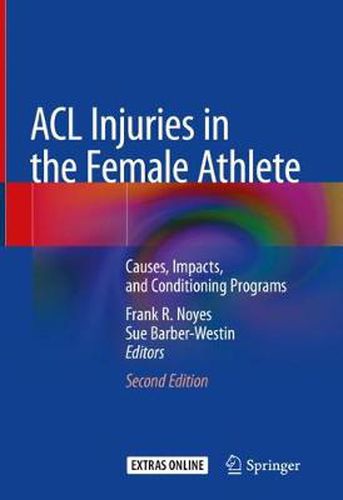Readings Newsletter
Become a Readings Member to make your shopping experience even easier.
Sign in or sign up for free!
You’re not far away from qualifying for FREE standard shipping within Australia
You’ve qualified for FREE standard shipping within Australia
The cart is loading…






This successful book, now in a revised and updated second edition, reviews all aspects of anterior cruciate ligament (ACL) injuries in female athletes, with the focus on complete, noncontact ACL injuries. The opening section discusses anatomy and biomechanics and explains the short- and long-term impacts of complete ACL ruptures, including long-term muscle dysfunction and joint arthritis. Risk factors and possible causes of the higher noncontact ACL injury rates in female athletes compared with male athletes are then discussed in depth. Detailed attention is devoted to neuromuscular training programs and their effectiveness in reducing noncontact ACL injury rates in female athletes, as well as to sports-specific ACL injury prevention and conditioning programs of proven value. Rehabilitation programs after ACL injury and reconstruction that reduce the risk of a future injury are explored, and the concluding section looks at worldwide implementation of neuromuscular ACL injury prevention training and future research directions. The book will be of value to orthopedic surgeons, physical therapists, athletic trainers, sports medicine primary care physicians, and strength and conditioning specialists.
$9.00 standard shipping within Australia
FREE standard shipping within Australia for orders over $100.00
Express & International shipping calculated at checkout
This successful book, now in a revised and updated second edition, reviews all aspects of anterior cruciate ligament (ACL) injuries in female athletes, with the focus on complete, noncontact ACL injuries. The opening section discusses anatomy and biomechanics and explains the short- and long-term impacts of complete ACL ruptures, including long-term muscle dysfunction and joint arthritis. Risk factors and possible causes of the higher noncontact ACL injury rates in female athletes compared with male athletes are then discussed in depth. Detailed attention is devoted to neuromuscular training programs and their effectiveness in reducing noncontact ACL injury rates in female athletes, as well as to sports-specific ACL injury prevention and conditioning programs of proven value. Rehabilitation programs after ACL injury and reconstruction that reduce the risk of a future injury are explored, and the concluding section looks at worldwide implementation of neuromuscular ACL injury prevention training and future research directions. The book will be of value to orthopedic surgeons, physical therapists, athletic trainers, sports medicine primary care physicians, and strength and conditioning specialists.